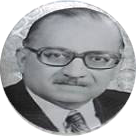





Mervat A. Hamed( 2014). NEW APPROACH TO USE FARM WASTES AS A NITROGEN FERTILIZER SOURCE: RICE strawJ. Soil Sci. and Agric. Eng., Mansoura Univ., Vol. 5 (11): 1541 - 1553, 2014
Abstract: A lysimeter experiment was carried out in the year 2012 at Sakha Research
Farm Kafr El-Shaikh Governorate. The experiment aimed to study the effect of
integrated use of ammonium sulphate (AS-N) and aqueous rice straw extract (RSE-N) as nitrogen sources on the yield (quantity and quality) of jew,s mallow and spinach crops in addition the quality of leached drainage water. Ammonium sulphate (AS-N) and (RSE-N) were combined in away to supply the recommended N-dose for experimental crops from both sources in (0:0) T1; (100:0) T2; (75:25) T3; (50:50) T4; (25:75) T5 and (0:100) T6 ratios arranged in a (RCB) design with three replicates. The results indicated that the highest jew,s mallow fresh yield (1583 g lysimeter-1) was recorded with (AS-N 50%) + (RSE-N 50%) treatment, while the highest spinach fresh yield (1405.66 g/liyzimeter) was obtained under T2 (100:0). On the other hand, the
level of nitrate either in crop leaves or drainage water was greater in treatment with T2 (100:0) ratio. Nitrate content (NO3-N) mg kg-1 in jew,s mallow leaves reached 1.39 > 1.20 >1.16 >1.15 > 1.11 fold for treatments (100:0 AS-N), (75% AS-N +25% RSE-N), (100% RSE-N), 25% AS-N +75% RSE-N), and (50% AS-N + 50% RSE-N), respectively, compared to that under control T1 (0:0). For spinach leaves reached 4.15 > 2.57 > 2.43 > 2.09 > 1.77 fold for treatments (100:0 AS-N), (75% AS-N +25% RSE-N), 25% AS-N +75% RSE-N), (100% RSE-N) and (50% AS-N + 50% RSE-N), respectively. Under all fertilizer treatments, the content of nitrate in plant leaves or drainage water were lower than the published maximum permissible level to cause humans health hazard.
Keywords: (rice straw extract; nitrate leaching, nitrate accumulation; Jews mallow; spinach.)